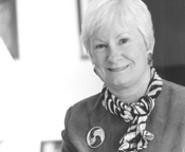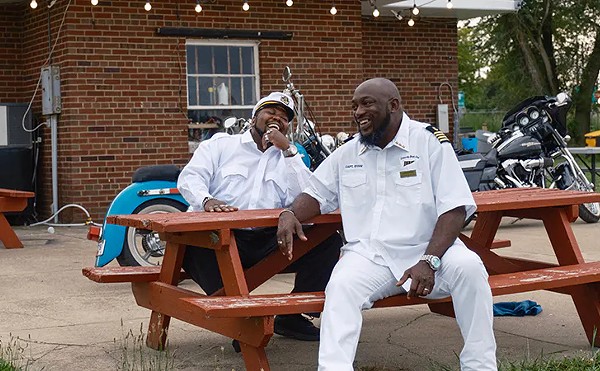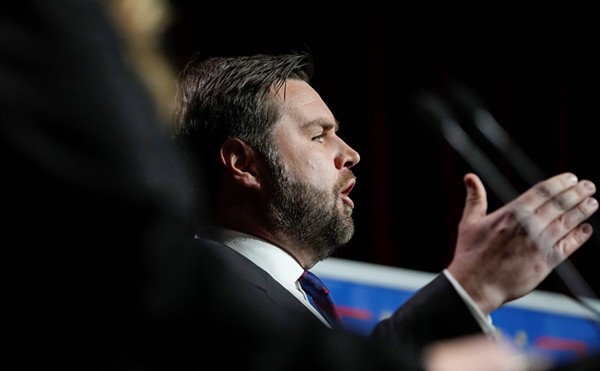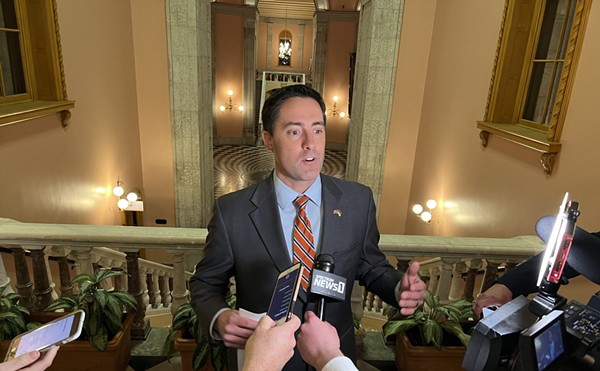"If those young women won't, when they have mothers involved with a women's college, you can see why we're losing students," Deming says.
Next fall, men will stride across Notre Dame's campus for the first time as full-time undergraduate students. The school's trustees accepted the reality that too many high-school girls -- 96 percent, in fact -- wouldn't think of attending a single-sex college. The talent pool was a talent puddle. So to get more girls to attend, Notre Dame is bringing in the boys.
Notre Dame's testosterone additive reflects the student-friendly approach at colleges around the country. The ivory tower looks more and more like a jungle gym for college-bound students, a flush generation born the same year as the IBM personal computer. Even marquee universities are offering such pamperings as an indoor golf range (Northwestern), massage sessions (Texas), and maid service (UCLA). "In many areas, the student has become the customer rather than the student," Alvin Kernan, a retired Princeton professor, recently told The Wall Street Journal.
Young men should help Notre Dame College look more like, well, a college. The school has 732 undergraduate students, but only 215 attend full-time. The closest thing to campus activity on a recent visit was an archery lesson -- at neighboring Regina High School. Presidents of women's colleges that began admitting men (there have been four since 1997) told Deming that Frisbee-tossing dudes liven up the place. They're also more destructive. "We got rid of all the carpeting and put down tile," one president said.
By going co-ed, Notre Dame risks losing its niche. Deming says small, women-only colleges appeal to the meek and the reticent. Girls who feel intimidated in the presence of men assert themselves; they leave school confident in their abilities to compete and lead. "When you get students in the door, they love it," Deming says. "But you can't get them through the door."
Notre Dame didn't have a perfect niche before it invited men; women-only Ursuline College is just two miles away. The refashioned Notre Dame is now a cozy liberal arts school -- smaller than John Carroll and Case Western Reserve, closer to town than Hiram or Lake Erie. Under its new strategy, Notre Dame is also reaching out to international and home-schooled students.
"Everyone is taking a look at what their market is," says Larry Christman, president of the Association of Independent Colleges and Universities of Ohio. Like any other enterprise, colleges need to attract bill-paying bodies. For small, private schools without fancy reputations or fat endowments, squiring students is that much more intense. A Notre Dame College can't roust its alumni for $1.23 billion, as Ohio State just did in a fund-raising drive. "Revenue and enrollment go hand in hand," Christman says. "It's kind of a circular thing."
Considering the tuition sticker price at private schools is more than four times that of public schools, it's something of a wonder how second-tier privates function. Presidents and deans sell size as much as anything, assuring prospective students they will not be treated like a number. "We talk about quality education with a personal touch," says Ed Warner, dean of enrollment services at Baldwin-Wallace College. B-W enrolled 763 freshmen this year, double the number from 1982.
A less advertised method of filling the rolls is a practice known as tuition discounting. Imagine an airplane where the passengers have paid different fares to fly. Schools offer scholarships to needy and/or attractive candidates, while the well-to-do, average student pays full freight. Christman says Ohio private schools gave out $380 million last year in institutional financial aid.
Perhaps no school caters to customers like the University of Phoenix, the largest college you've never heard of in the country. Phoenix is a for-profit, publicly traded company with 75,000 students at campuses in 17 states, Canada, and Puerto Rico. This fall, Phoenix opened a satellite in an office tower off I-77 in Independence. Classes are held in hotel conference rooms.
"When we come into a market, there is a lot of fear. Other institutions think we're competing for their bread and butter, when we're not," says Eric Ziehlke, operations manager of the University of Phoenix Cleveland campus. Phoenix isn't looking for 18-year-olds with impressive test scores. Instead, it markets to working adults who feel the lack of a degree is holding them back. The Cleveland campus offers a bachelor's degree in business as well as an MBA. Students average 35 years of age, and many had some college before drifting away into jobs and families.
To appeal to working people, Phoenix condenses courses into five-week sprints. Practical, market-ready knowledge is emphasized. "Today's higher education doesn't serve everybody," Ziehlke says. "Our founder, John Sperling, saw that and identified a niche that needed that."
Phoenix has been derided as "McEducation" and not without reason. Ziehlke referred to the Cleveland office as a "branch" before correcting himself and using the word "campus." Provided the essay meets school criteria, divorced students can earn their social-science credit by writing about their failed marriage. And in April, Phoenix settled a dispute with the U.S. Department of Education over federal financial-aid payments. Phoenix counted hours students spent in unsupervised "learning teams" as classroom time, making them eligible for full-time financial aid. The school admitted no wrongdoing, but paid the government $6 million. Ziehlke says learning-team attendance is now mandatory. "If we were out of compliance at a heinous level, I don't think we would have gotten away with $6 million," he says.
Phoenix's salesmanship may induce chuckles, but old-line colleges and universities are reaching out to nontraditional students as well. While Notre Dame's total enrollment grew by 62 from last year, the number of full-time students fell by 8. A quarter of B-W undergrads are part-timers. Schools like Malone advertise completion degrees that sound as strenuous to obtain as a shave and a haircut.
"It's not about selling," B-W's Dean Warner says. "It's about helping students get a good fit."












